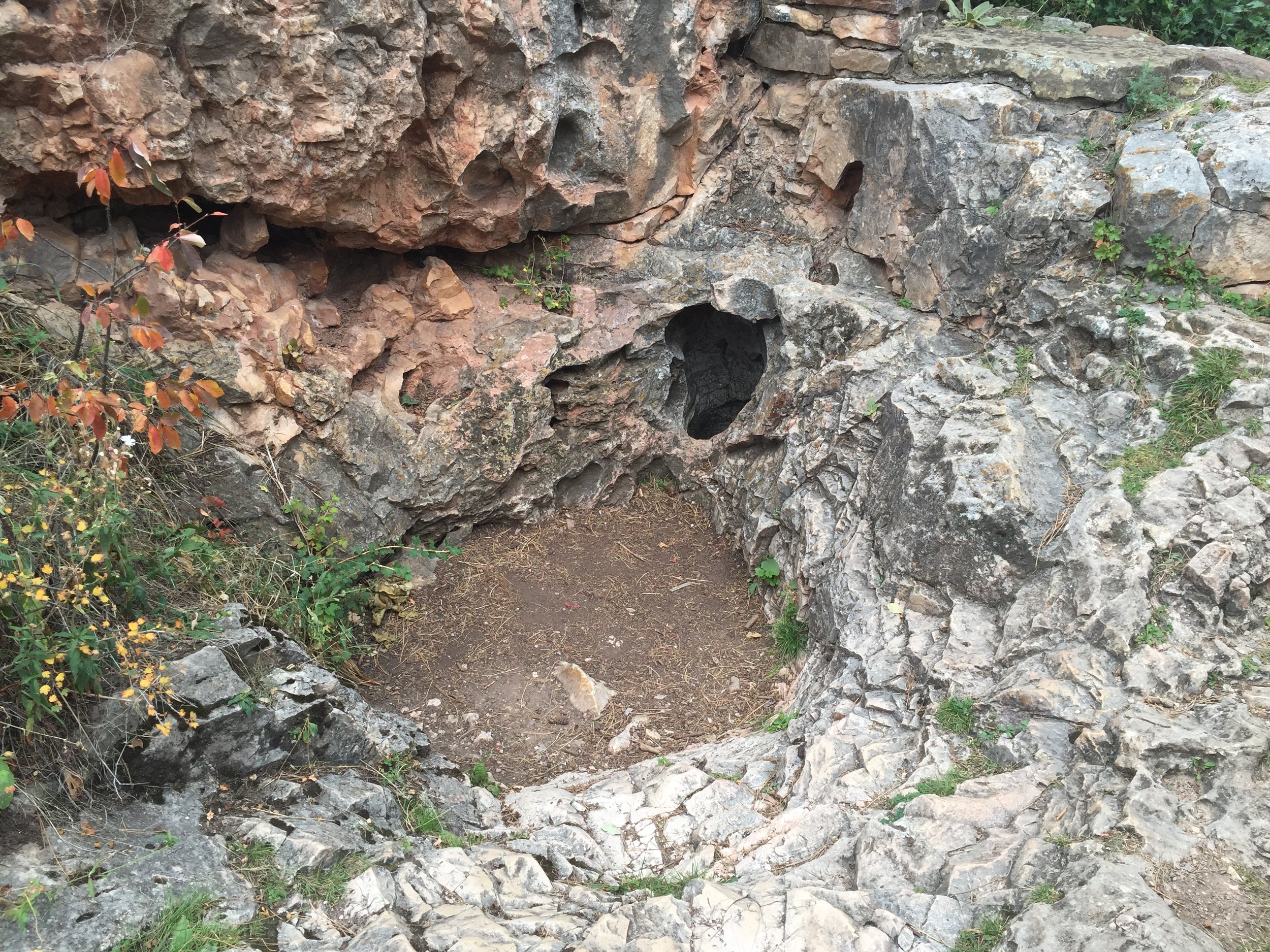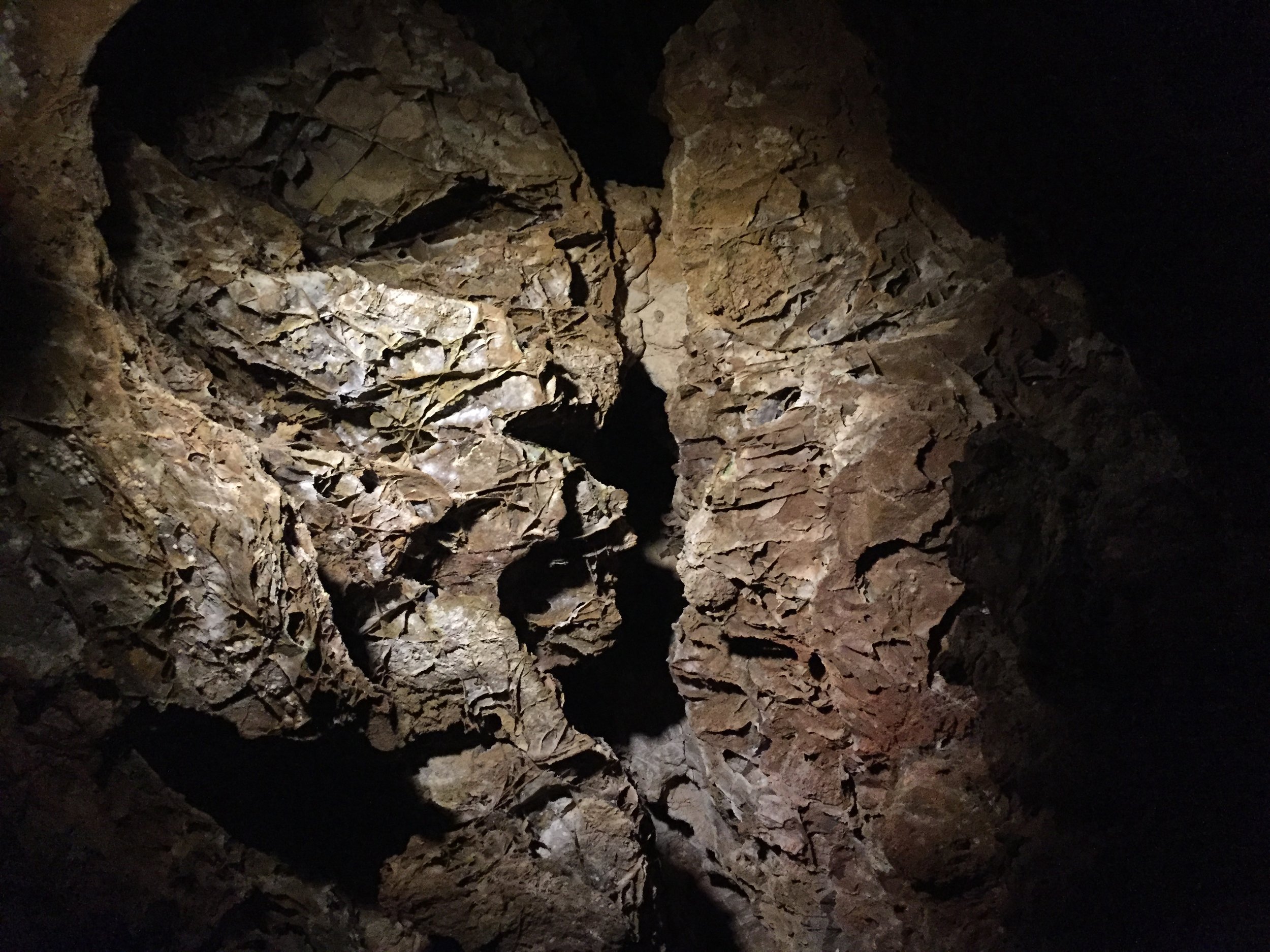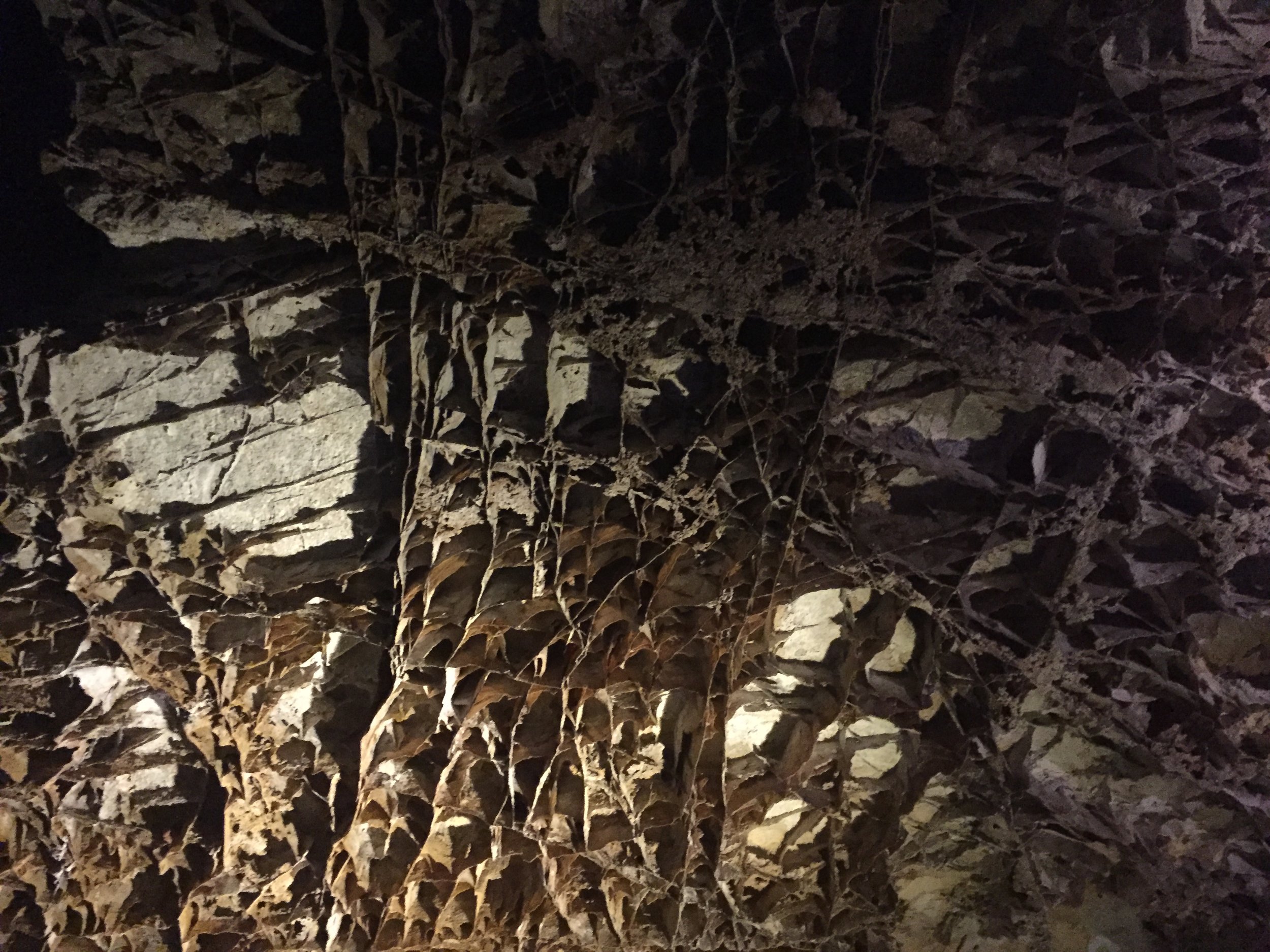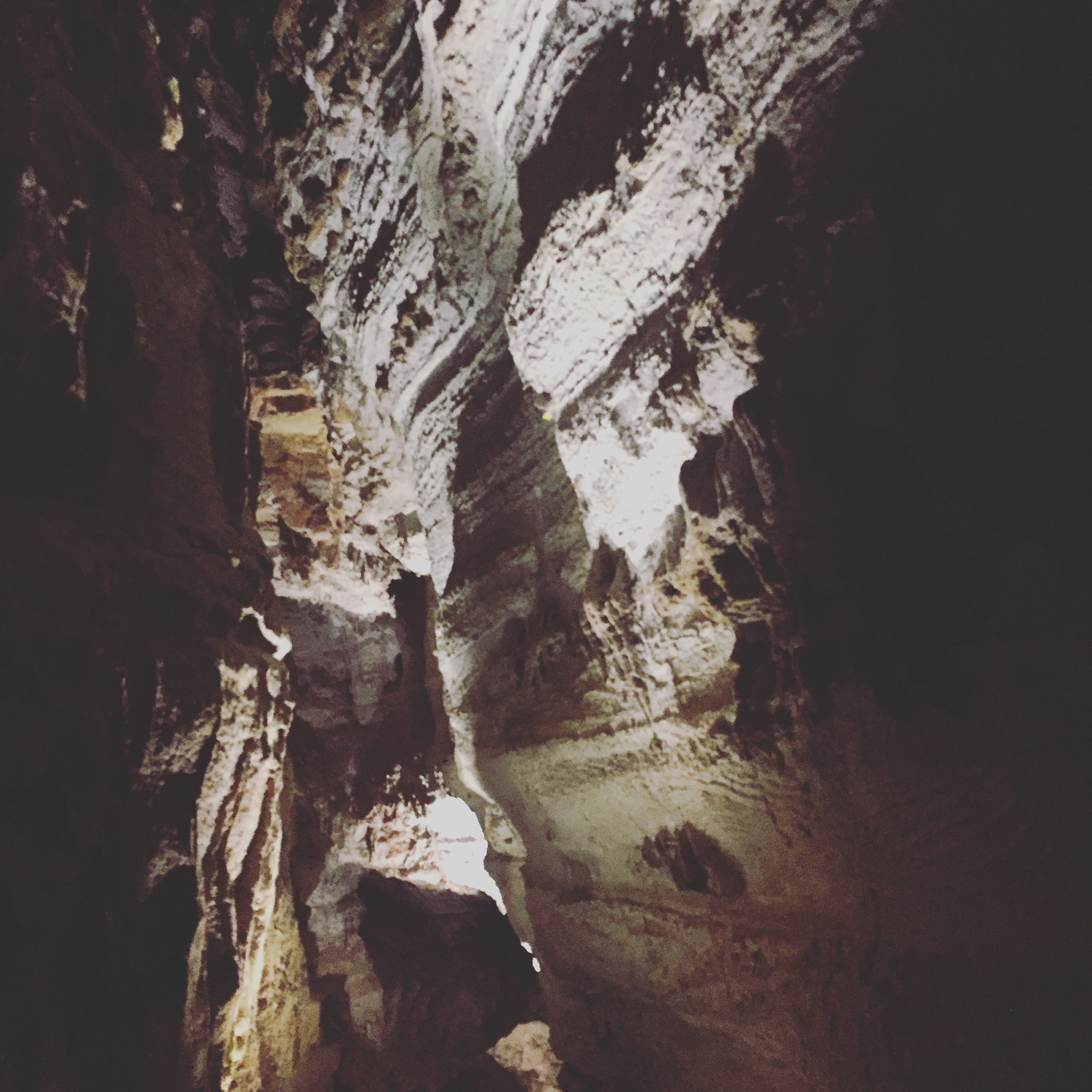I think we may have entered a time warp… In a little over two weeks, we’ve toured Yellowstone National Park, the Grand Tetons, Wind Cave National Park, the Badlands, and made it all the way to western Massachusetts where we’re settled in a picturesque campground outside the little town of North Adams. It barely seems possible, but in looking back we made quick work of those parks and drove for what seemed like days on end.
Our campsite in Yellowstone seems like a distant memory, but one worth recounting, so let’s start there. We arrived in the park mid-week and as we approached the west entrance, the number of signs warning of wildlife multiplied exponentially with each mile. It felt as if we were entering a drive-through zoo, which I guess we were, in a way. The prospect of seeing a bear seemed inevitable, so I had my camera at the ready for the entire hour and a half drive to our campground. No bears or elk were anywhere to be found, but there were plenty of bison and hoards of tourists creating an LA-esque rush hour scenario. This was the off-season — I can’t even imagine what it would have been like in July or August!
All week, I had been worried about road closures due to a fire burning the the park and another one further south in the Grand Tetons, but there had been a fair amount of rain that week, so we were clear to slowly creep to our campground following behind tour buses and random vehicles who decided to fully stop at the sight of anything with fur.
Tip: Make sure to check road conditions, closures, and other important information on each National Park’s website when visiting. They do a good job of updating the maps and weather warnings. You’ll also find the campground and village’s closing dates, as the season ends at different times for each area.
We ended up choosing Grant Campground, located right on Yellowstone Lake. It was open later in the season, it was central to the park’s many attractions, and was on the big lake. After arriving in the late afternoon, we quickly set-up camp, made dinner, and went to bed so we could wake early and see the sites before committing to an afternoon of productivity.
The next day we immediately ventured out to see as many geysers and springs as we could. While Old Faithful is perhaps the most popular and well-known of the geysers, there are hundreds of pools and fumaroles scattered around the park, most are surrounded in wooden boardwalks for easy viewing.
As we made our way up the 191 from Grant Village, we stopped at every pull-off we could to view and photograph the thermal features. It was a cool day, so the sulfuric steam from the molten lava-heated waters drifting through a partly cloudy sky was a warm welcome. Bacteria and algae rich run-offs cascaded into creeks running through the bright white crystalized minerals, creating a rich painting of colors and textures. Everywhere we looked, there was another wonder to be mesmerized by.
That evening we planned to meet up with another couple who are also full-timing it and happened to be passing through park at the same time. We initially met on Instagram, which is not an unusual way to meet your fellow road travelers in this life, as the platform creates an easy connection.
Christy and Cary came by our site for a beer and a lively conversation about the how’s and why’s behind this type of lifestyle. While our backgrounds were different, there were so many commonalities in terms of what inspired us each down this path. Also, since they had been full-timers since January, we considered them veterans and asked for any wisdom they could share about their experiences so far.
“Be kind to each other, and take your time.” Cary said immediately. Christy nodded quickly in agreement. We’ve remembered this advice a few times since, even though the latter part was perhaps something we had not learned just yet.
My father arrived the next day and we decided to drive up to see the Grand Canyon of Yellowstone and the Upper Falls, which my guidebook proclaimed as a must-see. There were no fewer than three tour buses in the parking lot of the viewpoint and we committed to shoving our way up to the viewing deck of the falls. The magnificent beauty of the falls and the canyon did not disappoint. In fact, even in real life, the magnitude of the canyon and the colors of the cliffs in contrast with the white cascading water of the falls seemed like an unreal artist’s rendering of the scene.
We saved Old Faithful for last, and planned to have brunch in the Old Faithful’s dining room before viewing the next scheduled blast from the geyser. My father, Tom, had once worked in the park, specifically at the Old Faithful lodge. Over breakfast, we were treated to his reminiscing of the park back in the 1970’s, when employees would sneak off to soak in the less deadly lava heated pools and pop champagne corks from the heights of the Crow's Nest inside the lodge, confusing the crowds of tourists below.
Old Geyser went off only three minutes before the scheduled prediction, and the short blast of hot, steaming water was just as impressive as promised. But then it was time to head back to camp, pack up, and move on south. As we left, we realized we were perhaps the last ones out of our campsite and the rangers were doing laps in their cart to ensure we were on our way so they could officially close up for the season.
Read our review of Grant Village Campground in Yellowstone
Our next destination was the Grand Tetons, and after reading multiple reviews on Campendium, satellite research, and fruitless inquiries to the rangers, I announced we were going to stay at a well-reviewed dispersed camping site just outside the Grand Tetons park boundary in Forest Service Land.
I just hoped I could guide us there and that it wouldn’t end up being a bad situation with our big girl, Ally behind us. Luckily we prevailed and as we bumped up the pot-holed gravel road, we saw why the reviews had been so raving.
The sites were arranged on a bluff with sporadic groves of aspen and pine, but with enough space in-between to offer some amazing view of the Teton mountains. The site itself is named Upper Teton View, and I would recommend it to anyone. We instantly decided to stay for an extra night. I mean, come on, this view for free — it doesn't get much better!
On the road again, we made our way to Wind Cave through Casper, Wyoming. Wind Cave is an amazing, complex sponge maze of caverns beneath the plains of South Dakota and we opted for the Natural Entrance tour which led us around the labyrinth with intricate ceilings of calcite box work and dissolved limestone formations.
Read our review of River's Edge RV Park and Campground in Casper, WY
While in Wind Cave National Park, we decided to drive the 30 minutes to see the work-in-progress mountain sculpture of the Crazy Horse Memorial Monument. With my connections to Native American Spirituality and knowledge of the history between the native tribes and the white settlers, it was more interesting to visit this monument than Mt. Rushmore.
Crazy Horse was one of the last Lakota to stand in defiance against the oppression of the white settlers and he fought numerous victorious battles to protect the Lakota lands when whites, in hunt of gold and fortune, were pushing the tribes onto reservations under the guise of 'Manifest Destiny'.
Crazy Horse was considered a 'wild Lakota' and was a true Native American hero. The massive monument looms over the black hills and what is almost more impressive than the sculpture itself is the commitment of the family of the original artist to complete their father's project. This is definitely a stop worth taking if you are in the southwest lands of South Dakota. Here's more information on the memorial.
Read our review of Elk Mountain campground in Wind Cave National Park
Current stage of sculpture.
What it will look like when completed.
The next day’s travel took us to the Badlands and we decided to stay at an RV park in Wall. SD rather than risking the roads up to another dispersed campground in the park. Many of the reviews mentioned that rains made some of the roads virtually impassable and the forecast for our day there was calling for hours of rain.
The morning we left to drive into the park was foggy and misty and we almost decided to by-pass the park entirely as we weren’t even sure we’d be able to see anything. But as we debated our route, the fog started to lift and we hurriedly took the next exit which seemed to lead to the park. The road we ended up on was a washboard gravel road, and for 7 miles we vibrated along, hoping our decision was going to be worth it. After miles of grasslands and much skepticism as to scenery of the park, we arrived at the Badlands loop where along one side of the highway was an entirely different world.
The grasslands seemed to abruptly stop at the road dividing our entrance and the looming, banded mountains that stretched out before us. We both gasped when we saw it, as the difference was simply incredible.
Grey and red streaked peaks jutted out of a wasteland desert of silt and very little plant-life. The effect was haunting and when you see it, you completely understand the name of this area. These were most definitely bad lands, but in the most beautiful way.
Another 20 or so miles wound us through the strange, desolate place and after many stops to take photos and stand in awe, were were back in the grassland plains of green and yellows. On our way to visit a winery in Sioux City.





















